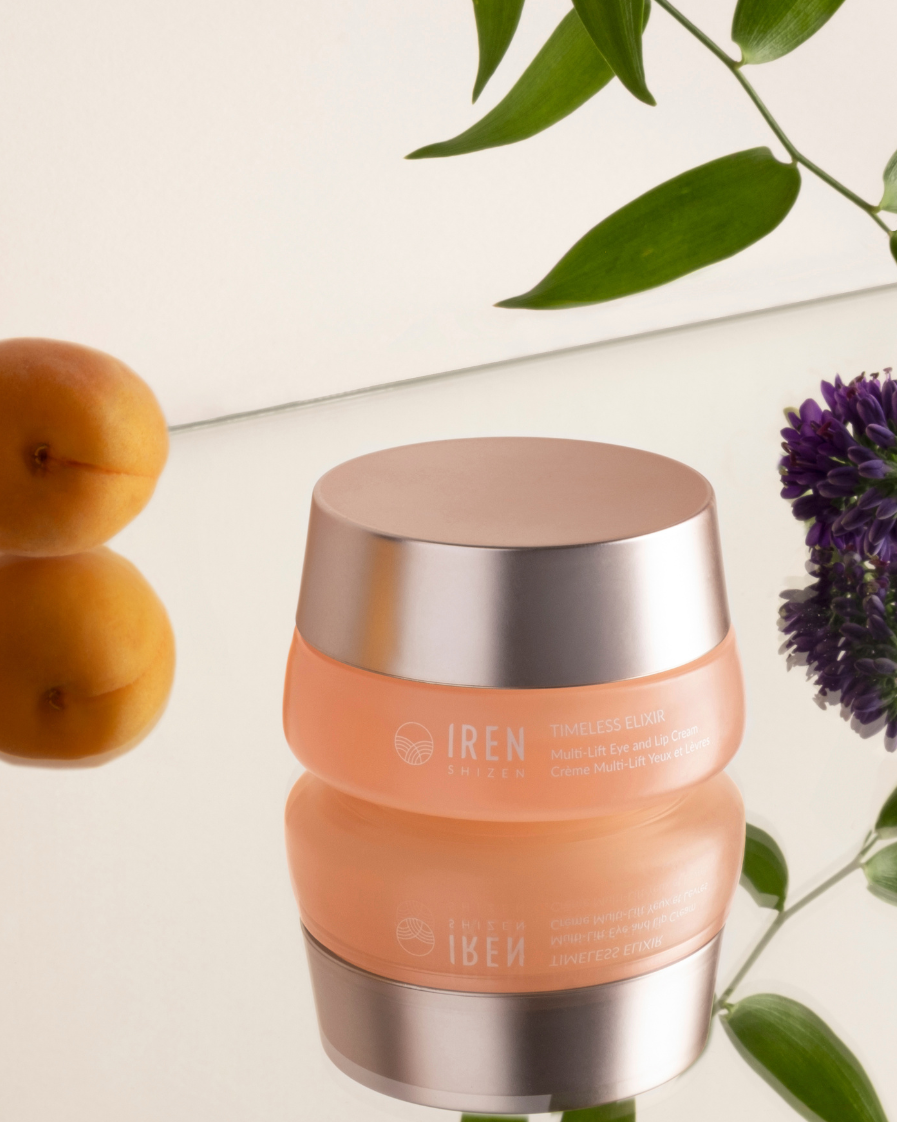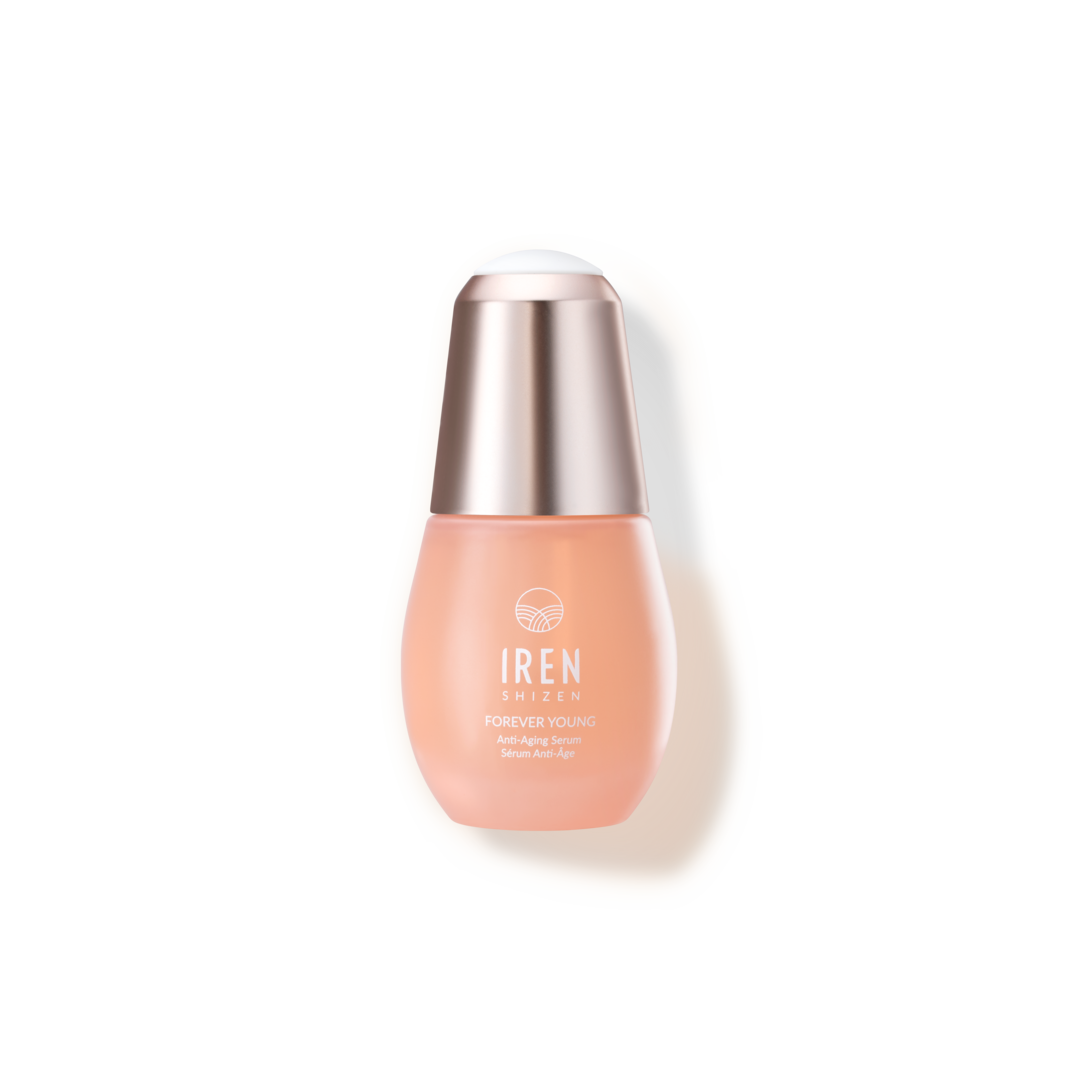Sie wissen wahrscheinlich viel mehr über Sulfate, als Sie denken. Sagen Ihnen Begriffe wie Natriumlaurylsulfat (SLS) oder Natriumlaurethsulfat (SLES) etwas? Das sollten sie auch – schließlich sind sie in den meisten Ihrer Shampoos und Hautpflegeprodukte enthalten!
Doch obwohl sie die angenehme, schaumige Textur bieten, die wir so lieben, befürchten wir, dass dies seinen Preis hat. Lesen Sie weiter, um zu erfahren, warum Sie diese Inhaltsstoffe in Ihrer Hautpflege vermeiden sollten.
Was sind SLS und SLES?

Zu den bekanntesten Sulfaten zählen SLS und SLES, die aus Erdöl und pflanzlichen Quellen wie Kokosnuss-, Palmkern-, Erdöl- und Palmöl hergestellt werden und am häufigsten in typischen Reinigungs- und Körperpflegeprodukten zur Schaumbildung vorkommen.
Was ist der Unterschied zwischen den beiden, fragen Sie sich? Nun, SLS bindet an die Proteine auf der Hautoberfläche und wirkt dadurch stärker reizend und allergen als SLES. Im Wesentlichen wirkt es als anionisches Tensid, das Schmutz in Ihren Hygiene- und Kosmetikprodukten emulgiert und entfernt.
SLES hingegen wird durch Ethoxylierung aus SLS gewonnen und als Reinigungsmittel, Emulgator, Stabilisator und Lösungsvermittler eingesetzt. Aufgrund seiner zusätzlichen Eigenschaften und der niedrigen Produktionskosten wird es häufig auch als Alternative zu SLS verwendet, was von Unternehmen immer bevorzugt wird.
Welche Kosmetika enthalten SLS und SLES?

Zu den Kosmetikprodukten, die Sulfate enthalten, gehören (und machen Sie sich bereit, denn diese Liste ist endlos):
- Shampoos und Spülungen
- Haarfärbemittel
- Styling-Gele
- Badebomben
- Badeöle oder Salze
- Duschgel
- Gesichtsreinigung
- Peelings
- Rasiercremes
- Lippenbalsam
- Zahnpasta
- Zahnaufhellungsprodukte
- Mundwasser
- Handdesinfektionsmittel
- Nagelbehandlungen
- Stiftung
- Make-up-Entferner
- Cremes und Lotionen
Die Menge an Sulfaten in Hautpflegeprodukten kann variieren zwischen 0,01 % bis 50 % , je nach Hersteller. Aufgrund der effektiven Reinigungs- und Emulgiereigenschaften ist es kein Wunder, dass Kosmetikmarken es für ihre Produkte verwenden.
Welche schädlichen Auswirkungen haben SLS und SLES?

Das Wichtigste, was Sie über diese Inhaltsstoffe wissen müssen, ist, dass sie bei Hautkontakt Reizungen und allergische Reaktionen hervorrufen können. Angenommen, Sie haben von Natur aus empfindliche Haut oder sind ihnen langfristig ausgesetzt – dann können Reizungen der Augen, der Haut, des Mundes und der Lunge sowie verstopfte Poren auftreten. Dies wiederum führt zu Akne, selbst bei der geringsten Sulfatkonzentration in Ihren Hautpflegeprodukten.
Wenn Sie Reinigungsprodukte mit SLS und SLES verwenden, kann die Konzentration der Sulfate höher sein, um hartnäckige Flecken zu entfernen. Dies bedeutet, dass Sie einem höheren Risiko von Hautreizungen durch Hautkontakt oder Einatmen ausgesetzt sind. Aber wir schweifen ab.
SLS
SLS reizt nicht nur die Haut, sondern trocknet sie auch aus. Wissenschaftlich gesehen macht diese Verbindung Ihre Epidermis dünner, erhöht ihre Erneuerungsrate und ihren Wasserverlust, verringert die Reife und Größe der Korneozyten (ein wesentlicher Bestandteil Ihrer Hautbarriere!) und beschleunigt die Aktivität entzündlicher Proteasen in Ihrer Haut.
Einfach ausgedrückt: SLS strafft und entzieht der Haut ihre natürlichen Öle und führt zu Schuppenbildung, die zu juckender Haut und Kopfhaut, Ekzemen und Dermatitis führen kann. Bei manchen Menschen kann die kontinuierliche Einwirkung dieses Inhaltsstoffs schwerwiegendere Reaktionen hervorrufen, beispielsweise fettigere Haut, die den Verlust natürlicher Öle überkompensiert, und Akne-Schübe durch übermäßige Ölproduktion auslösen.
Wenn Sie regelmäßig unter Mitessern und Pickeln leiden, könnte dies an einer längeren Exposition gegenüber SLS liegen. Shampoos mit dieser Verbindung tragen ebenfalls zur Schwächung der Haarfollikel und zu Haarausfall bei. Leider bleibt SLS auch nach dem Auswaschen noch lange im Haar haften und mindert mit der Zeit die Festigkeit der Follikel.
SLES
Obwohl es milder ist, kann SLES als schädlicherer Inhaltsstoff als SLS wahrgenommen werden. Studien zeigen, dass SLES Hautreizungen, Rötungen und Schäden an der Hautbarriere verstärkt. Aufgrund seiner schäumenden Natur kann es Mikrorisse in der Hautbarriere verursachen und dazu führen, dass sich Schmutz und Bakterien darunter festsetzen und Akne verursachen (genau wie SLS).
Es verursacht nicht nur Hautreizungen und Trockenheit, sondern wirkt auch als potenzielles Karzinogen. Das Hauptproblem bei SLES ist die Ethoxylierung. Während dieses Herstellungsprozesses kann SLES mit 1,4-Dioxan verunreinigt , das möglicherweise die Entstehung von Krebs fördert.
Tatsache ist: SLES muss vakuumgetrennt werden, um Verunreinigungen zu vermeiden. Es ist jedoch nicht bekannt, ob Unternehmen dies bei der Herstellung tun. Und wir haben die Belege! Eine Studie ergab, dass in 82 % der 76 getesteten Hautpflegeprodukte 1,4-Dioxan gefunden wurde. Von wegen riskantes Verhalten.
Auch wenn kein direkter Zusammenhang mit Krebs nachgewiesen ist, ist es dennoch am besten, auf SLS und SLES zu verzichten. Sie wissen ja, was man sagt: Vorsicht ist besser als Nachsicht!
Wie werden SLS und SLES reguliert?

Obwohl es für SLES nicht viele Vorschriften gibt, wurden einige (und mit einigen meinen wir eine winzige Handvoll) inoffiziell für SLS eingeführt. Allerdings nicht von den Regierungsbehörden.
Da Untersuchungen ergeben haben, dass SLS unbedenklich ist (bei kurzer Anwendung und anschließendem Abspülen von der Haut), beschränken die meisten Unternehmen die SLS-Konzentration in ihren Hautpflegeprodukten weiterhin auf maximal 1 %.
Was sind die Alternativen zu SLS und SLES?

Einige bemerkenswerte Alternativen zu diesen Sulfaten sind natürliche Heilmittel. Versuchen Sie, Seife und Shampoo in festen Stücken anstelle von flüssigen Produkten zu kaufen, oder entscheiden Sie sich für Produkte auf Ölbasis. Afrikanische schwarze Seife und Körperreinigungsöle sind ebenfalls geeignete Ersatzstoffe für die Sulfate und befreien Haut und Kopfhaut ebenso wirksam von Schmutz.
Wenn möglich, sollten Sie beim Kauf zukünftiger Hautpflegeprodukte auf Sulfate verzichten. Sulfate spielen bei der Reinigung keine große Rolle, daher ist es völlig in Ordnung, wenn Sie sie aus Ihrer Routine streichen.
Unser Rat?

Letztendlich ist der beste Rat, den wir Ihnen geben können, sulfatfreie Marken zu unterstützen (wie wir). Dies gilt insbesondere, wenn Sie unter Hautproblemen wie empfindlicher Haut, Dermatitis, Rosazea und Psoriasis leiden, da Sulfate diese nur verschlimmern.
Wie bereits erwähnt, sind Sulfate für Ihre Reinigungsroutine nicht unbedingt erforderlich. Im Ernst, sie sorgen lediglich dafür, dass Ihre Produkte schäumen. Wenn es Ihnen passt, versuchen Sie, sulfathaltige Produkte nach und nach aus Ihrem Hautpflegevorrat zu entfernen und beobachten Sie, ob sich Ihr Hautgefühl spürbar verändert. Wir garantieren Ihnen, dass Ihre Haut weniger gereizt wird!
|
Möchten Sie mehr über die 6 weiteren No-Go-Zutaten von IREN Shizen erfahren? Hier können Sie alles darüber lesen: |









































